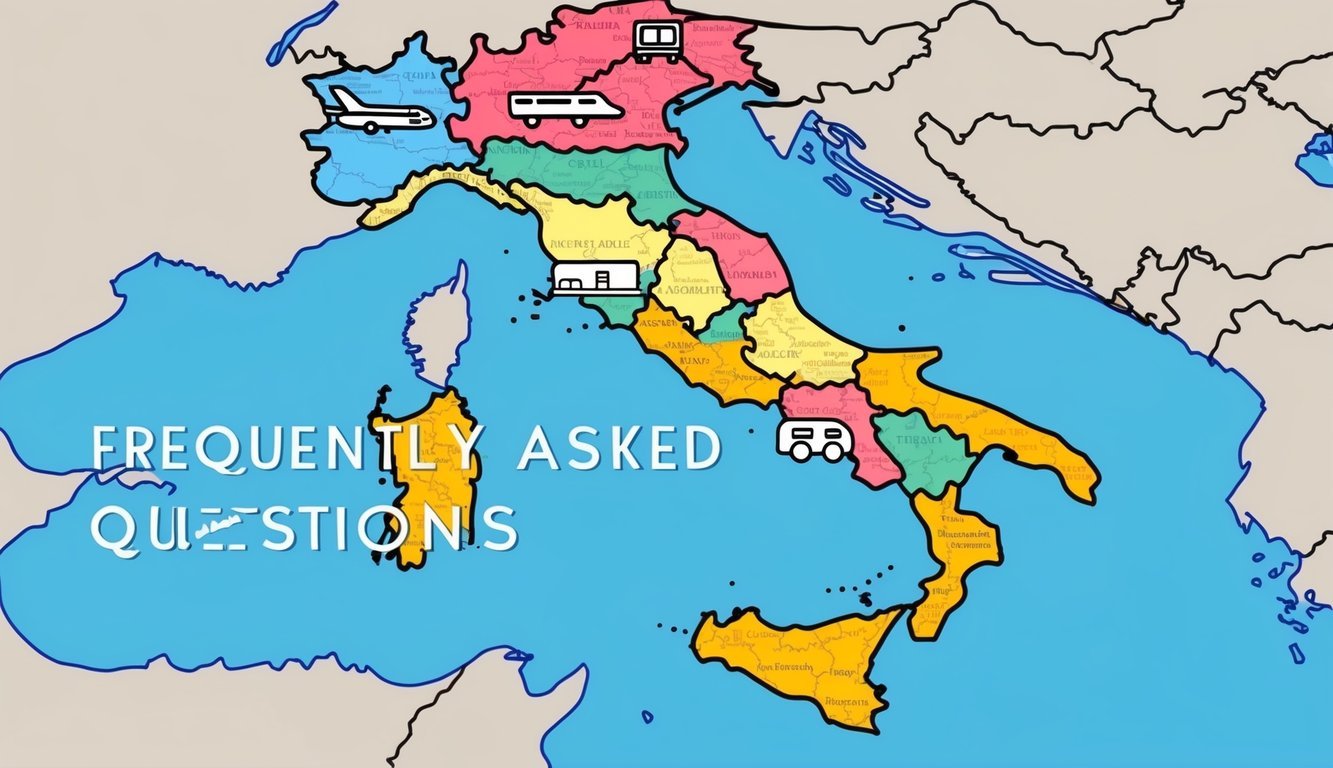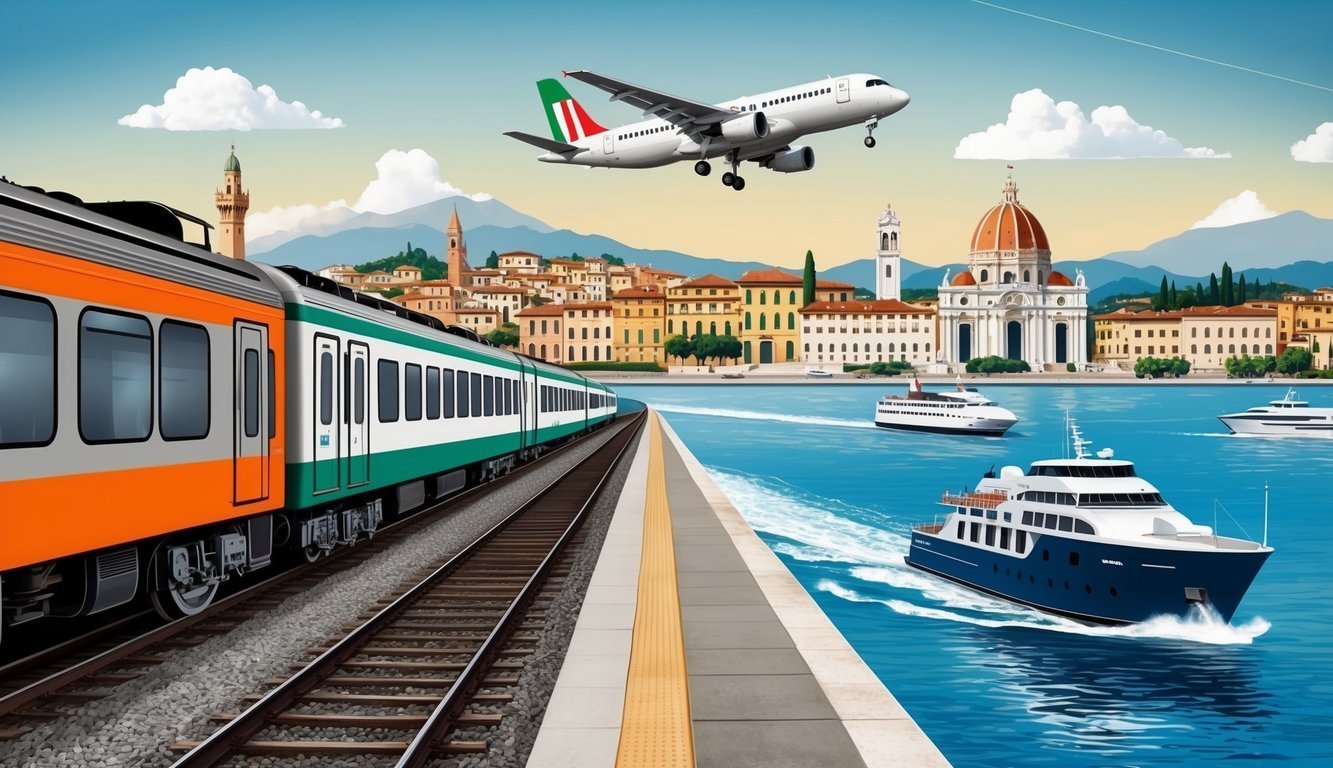Traveling to Italy can be an exciting adventure, full of beautiful sights and rich culture.
Several ways to reach Italy can suit different preferences and budgets.
Whether you’re looking for quick options or more scenic routes, Italy is accessible in more ways than you might think.
Understanding your travel options can make planning your trip easier.
You’ll find that getting to Italy is not only straightforward but also offers unique experiences along the way.
Visa and Travel Requirements
Before you pack your bags for Italy, you need to know about the visa and travel requirements.
Understanding what documents you need can save you time and hassle.
Here’s what you should know.
Understanding Schengen Visa
If you’re not from the EU or countries with visa-free travel agreements, you’ll need a Schengen Visa to visit Italy.
This visa allows you to move freely within the Schengen Area for up to 90 days within a 180-day period for tourism or business.
Key Requirements for a Schengen Visa:
- Completed visa application form
- Valid passport with at least three months’ validity beyond your planned stay
- Recent passport-sized photographs
- Proof of accommodation (hotel reservation or invitation from a host)
- Travel itinerary, including proof of transportation
Gather these documents before applying to make the process smoother.
Remember, applying at least 15 days before your trip is a good idea, but you can apply up to six months in advance.
Travel Insurance
While not mandatory, travel insurance is highly recommended when traveling to Italy.
It can cover unexpected medical expenses, trip cancellations, and lost luggage.
Not only does it provide peace of mind, but it may also be required when applying for your visa.
What to Look for in Travel Insurance:
- Medical coverage for emergencies or illnesses during your trip
- Coverage for trip cancellations or interruptions
- Protection against lost or stolen belongings
Before purchasing insurance, compare plans for coverage limits and exclusions.
Check if your current health insurance covers international travel to avoid duplication.
It’s better to be prepared, so you can enjoy your trip without worries.
Packing Essentials for Italy
When preparing for your trip to Italy, it’s important to consider both the climate and how you plan to spend your time there.
Having the right clothing and knowing about local payment options will make your experience much smoother.
Seasonal Clothing Tips
Italy’s weather varies by season, so packing accordingly is key.
In spring, light layers work best.
Think breathable tops and a light jacket for occasional rain.
Summer can get very hot, especially in cities like Rome and Florence.
Lightweight fabrics, shorts, and comfortable sandals are essential.
As for autumn, a mix of long-sleeves and layers is best.
A nice fall jacket will keep you warm during cooler evenings.
In winter, pack heavier coats, scarves, and sturdy boots.
If you plan to visit snowy areas, don’t forget to include warm accessories.
Always check the forecast before you leave.
This way, you’ll be prepared for any surprises the weather might throw your way.
Local Currency and Payment Options
Italy uses the euro (€), so it’s wise to have some cash on hand, especially for smaller shops, cafes, or markets.
ATMs are widely available, and withdrawing cash in euros usually saves you money compared to currency exchange services.
Credit and debit cards are commonly accepted, but check with your bank about foreign transaction fees.
Bringing a card with no fees will save you money while traveling.
Notify your bank before your trip so they don’t block your card for unusual activity.
Lastly, consider getting a travel-friendly wallet or crossbody bag for safety and easier access to your cash and cards as you explore.
Frequently Asked Questions

Traveling in Italy can be a fantastic experience.
You might have questions about the best ways to get around, budget options, and tips to make your trip smooth and enjoyable.
Here are some common questions and straightforward answers.
What’s the best way to get around Italy on a budget?
To travel on a budget, consider using Italy’s extensive train system.
Trains are affordable and connect major cities efficiently.
Regional trains can cost as little as €6, making them a great option for budget travelers.
Which mode of transportation is most popular for tourists in Italy?
Most tourists favor trains for their convenience and speed.
High-speed trains link cities like Rome, Florence, and Milan in just a few hours.
They’re a reliable choice for both short and long distances.
How do I travel between cities in Italy easily?
Traveling between cities is easiest by train.
You can buy tickets online or at stations.
Make sure to check schedules and choose the best train type for your itinerary, whether it’s a fast train or a regional service.
Can I explore Italy effectively using public transport?
Yes, public transport is very effective in cities like Rome, Milan, and Florence.
Buses, trams, and metros cover many areas.
With a little planning, you can reach most attractions without a car.
What are some tips for traveling to Italy from the USA?
When traveling from the USA, try to book your flight in advance for better rates.
Also, consider the time difference and plan for jet lag.
Lastly, learn a few basic Italian phrases to help with communication.
Are there handy apps to navigate Italy’s public transportation system?
Several apps can help you navigate public transport in Italy.
Examples include Google Maps and local transit apps.
They provide real-time schedules and directions.
Having one of these apps can make your travels smoother and less stressful.

